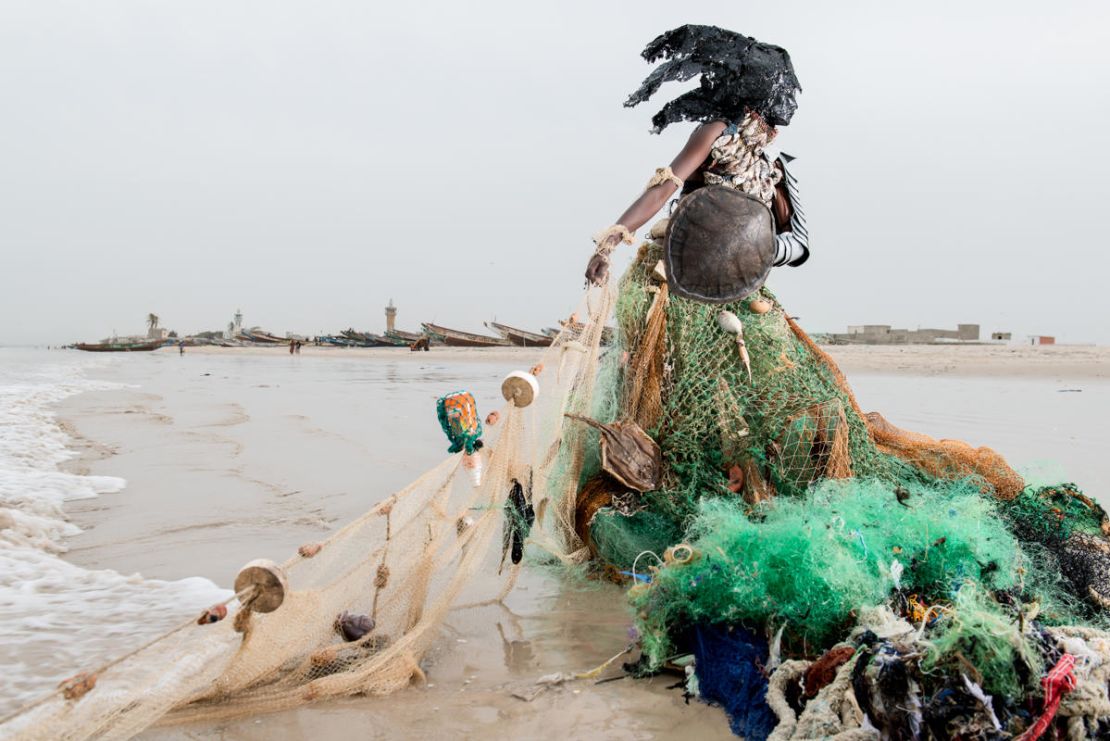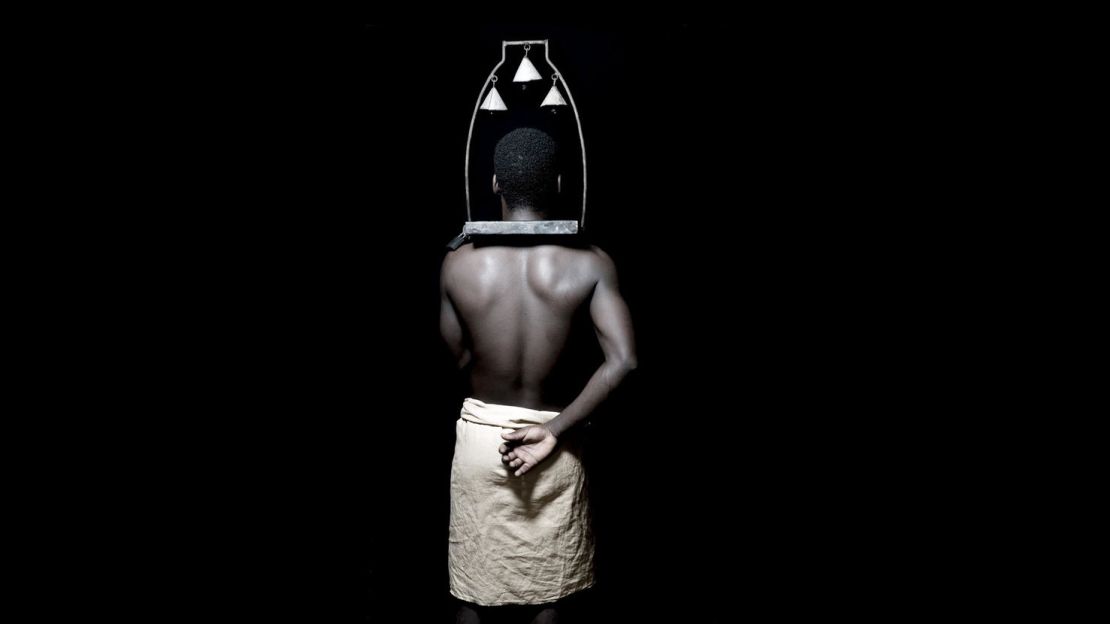Story highlights
Photographer Fabrice Monteiro has teamed up with stylist Dously to create a series of haunting images that tackle environmental issues
The photos were shot in Dakar, Senegal
An exhausted spirit-like creature, emerging from the depths of the ocean, is weighed down by the tons of decay and waste that make up her long gown.
This is just one of 9 photos that appear in “The Prophecy,” a haunting photo series created by Belgian-Beninese photographer Fabrice Monteiro and a Senegalese stylist known as Doulsy.
In the series, trash is turned into garments of haute couture. Monteiro explains that he used the story of the ancient Greek goddess Gaia to construct his narrative. Each model is one of Gaia’s children, embodying nine of her concerns:
“Gaia, the mother earth, (is) exhausted by her incapacity to maintain the natural cycles of the planet in front of new modes of life and consumption. She resolves to send her djinns (children), to let them appear to the humans and deliver a message of warning and empowerment.”
Using this story as a starting point, Monteiro and Doulsy tackled modern day issues such as ocean waste, global warming and careless consumer culture in the photos.
Creative collaboration

The series took two years to complete: “The collaboration with Doulsy was remarkable on this project. I would come up with the concept and we would associate our respective vision to create the costumes. Tar, sand, fishing nets, fish scales, tree bark, every costume material had to refer to the specific issue.”
Once the materials were found, the next step was the shoot itself: “Everything in the accomplishment of this series has been a challenge. From the creation of the costumes to gaining access to certain sites. Each image also had to be done at a certain time of the year – from flood season, to slash and burn season, to charcoal season.”
Art as conversation

Monteiro believes he is both a photo journalist and a fashion photographer, and has previously used the art of photography to tackle social issues like genocide and slavery.
One of his first projects was “Marrons,” which focused on slavery in his hometown, in Ouidah, Benin. He recently documented the Baye Fall, a small Muslim community found in Senegal, who are often confused for Rastafarians.
Monteiro believes that art is one of the most effective means of expressing concern and hopes that his newest work with “The Prophecy” will help spark important discussions.
“When it comes to speaking about environmental issues, either you get alarming numbers and statistics or pictures of devastated landscape. But with projects like “The Prophecy,” you can speak to the hearts of people by mixing facts and art. Giving this issue a mystical element helps with awareness, and pushes people to change – and change now.”











